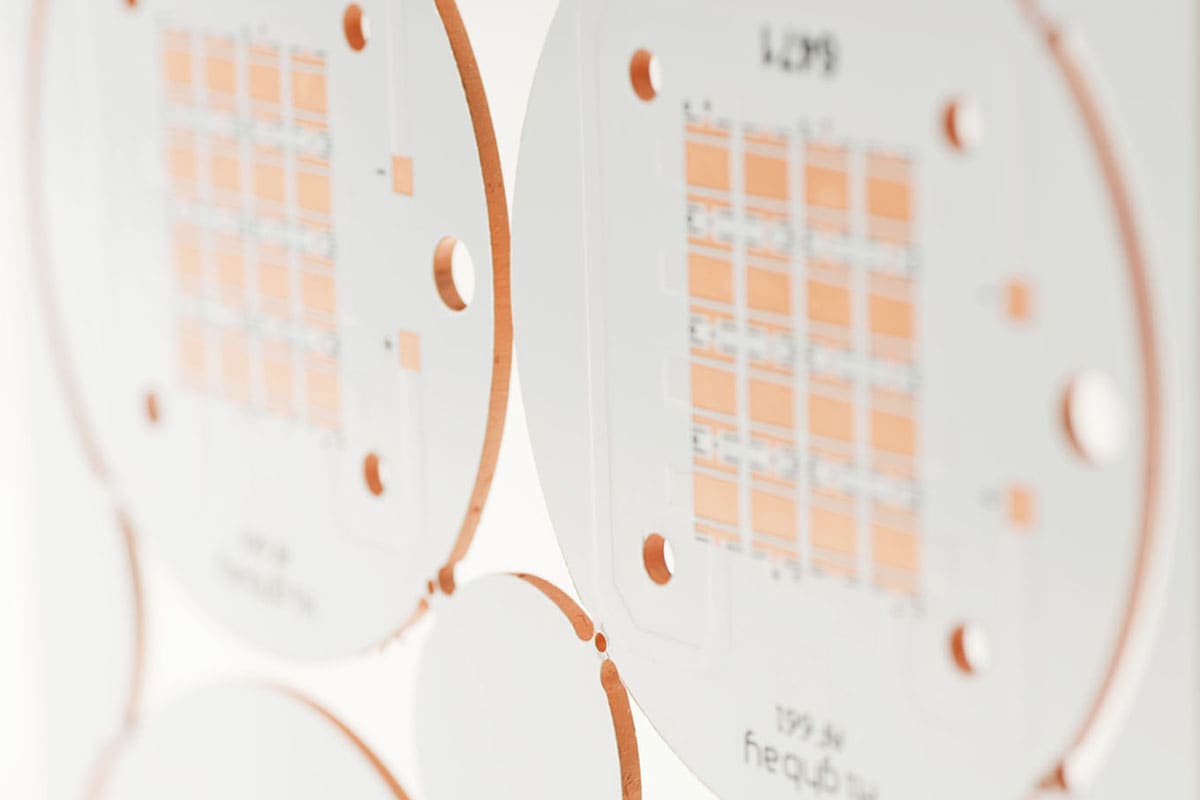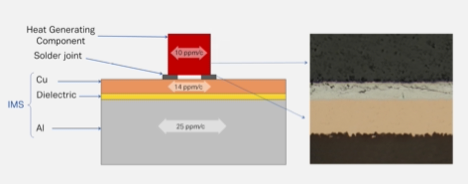Aismalibar is a world leader when it comes to CTE management materials. The very low modulus of the new Aismalibar thermally conductive, thin dielectric layer for IMS will allow the aluminum expansion to side slip the solid LED/solder base enough to reduce the possibility of solder joint cracking by reducing pressure on the LED solder joint.
Prevention of LED Solder Joint
Failure in IMS PCB

Aluminum has a coefficient of thermal expansion (CTE) of approximately 25 ppm/ºC, compared to copper at 14 ppm/ºC. The Young’s modulus of both is relatively high, whereas the Young’s modulus of the dielectric is very low. The aluminum in the insulated metal substrate package is by far the thickest component with the highest mass, which means that its expansion dominates over the dielectric layer and the thin copper trace layer. This can easily be demonstrated by comparing the measured thermal expansion coefficient of bare aluminum with that of a typical IMS substrate. The aluminum expands at 25.0 ppm/ºC. However, a typical IMS substrate only reduces CTE to a very slightly lower value of 24.0 ppm/ºC. Clearly, it is the relatively thick layer of the aluminum that dominates the overall measured expansion coefficient of the substrate.
The aluminum base will expand the entire PCB in all directions and create a side force pressure on the solder joint holding the LED ceramic package to the thin copper trace layer. The LED is not expanding, because its CTE is close to zero. The only item between the expanding aluminum PCB package and the critical copper trace layer with the LED base soldered on is the dielectric layer. Ideally, the lower the Young’s modulus of the dielectric layer the better. Solder is not outstanding at absorbing any sideways pressure. The solder will work harden a little bit with each thermal expansion cycle. Over time and repetitive thermal cycles, the hardened solder will start to crack. The very low modulus of the new Aismalibar thermally conductive, thin dielectric layer for IMS will allow the aluminum expansion to side slip the solid LED/solder base enough to reduce the possibility of solder joint cracking by reducing pressure on the LED solder joint.

As the base metal expands, the dielectric layer will side slip that expansion. It is not strong enough physically to resist, therefore saving the LED solder joint from the bulk of the expansion stress. To learn more, please contact us today.
